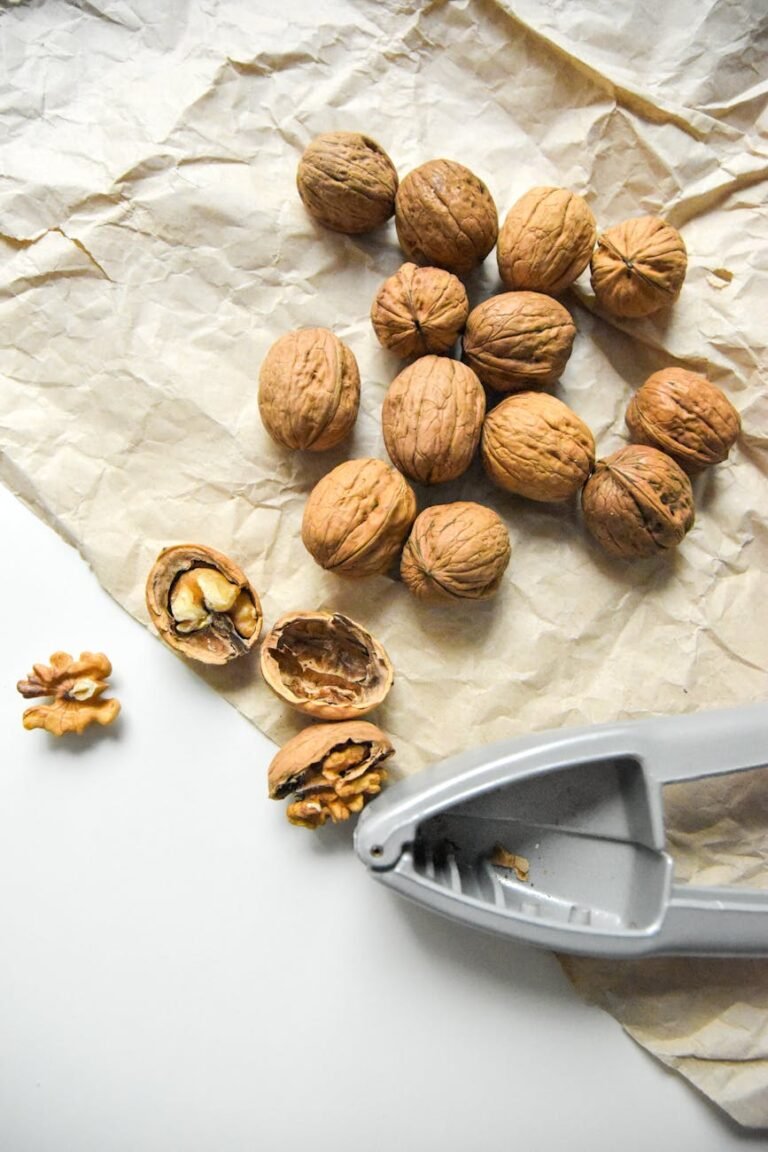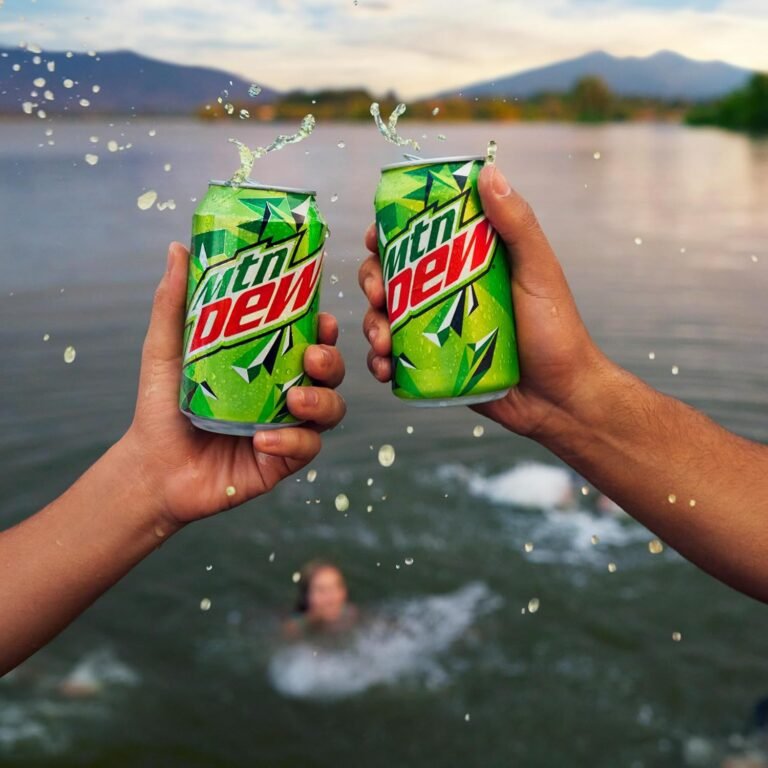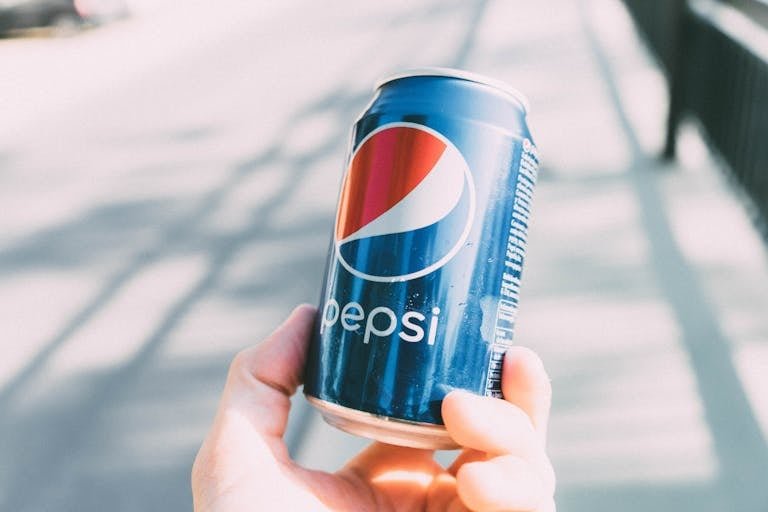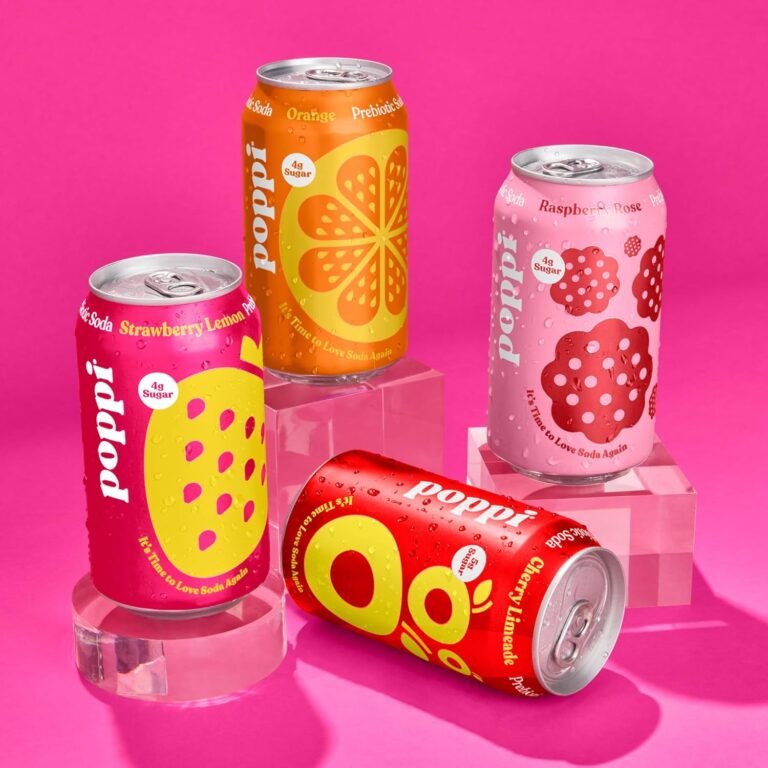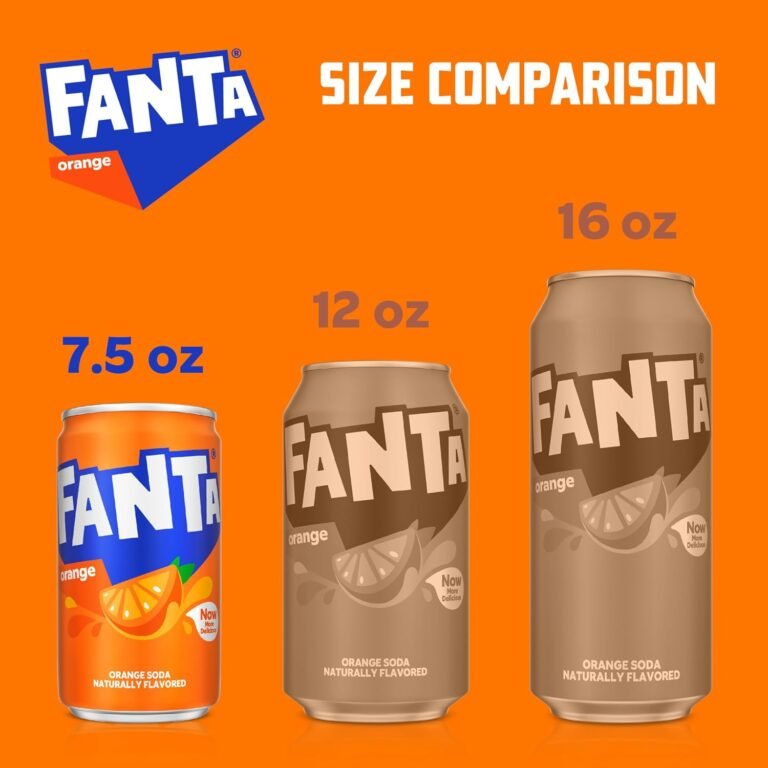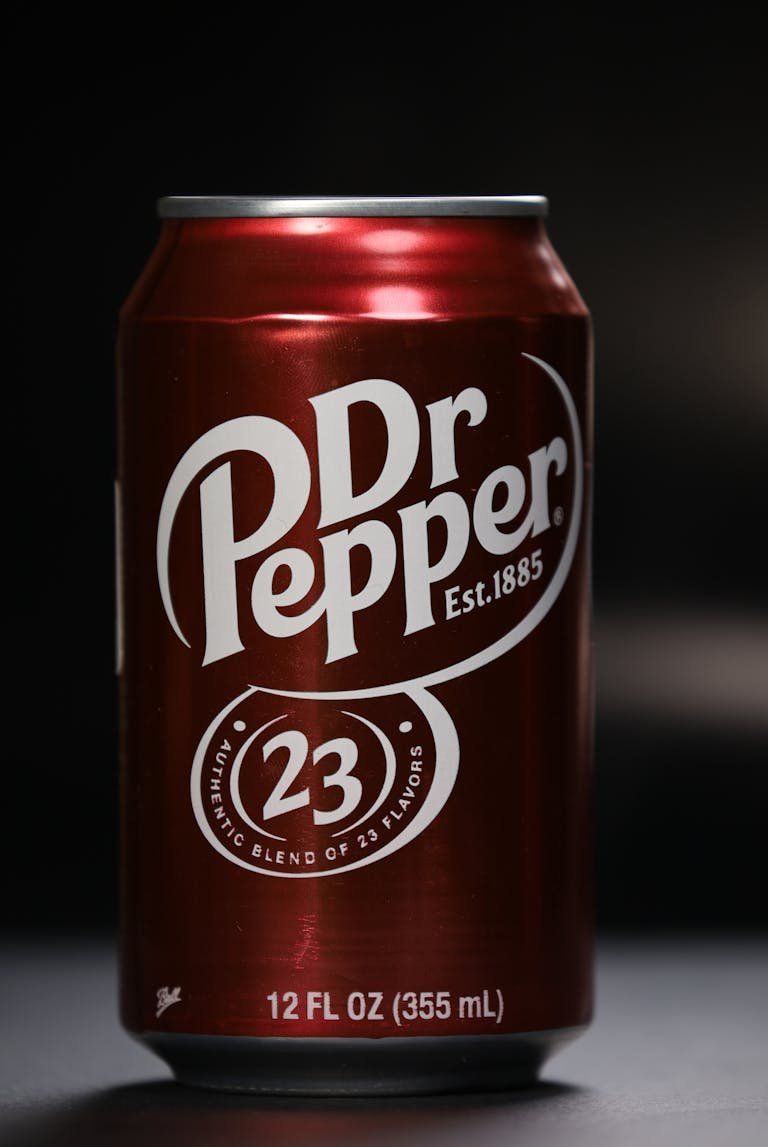Diet Coke Ingredients: What’s Inside the Zero-Calorie Favorite (2025)
The Diet Coke ingredients list has sparked curiosity and conversation since its debut in 1982. This zero-calorie soda giant sells over 200 million cases annually in the US alone, but many fans don’t realize it uses a completely different formula from regular Coca-Cola. Unlike Coke Zero, which mimics classic Coke’s taste, Diet Coke was intentionally crafted with its own unique flavor profile. Let’s explore what makes up America’s favorite diet soda!
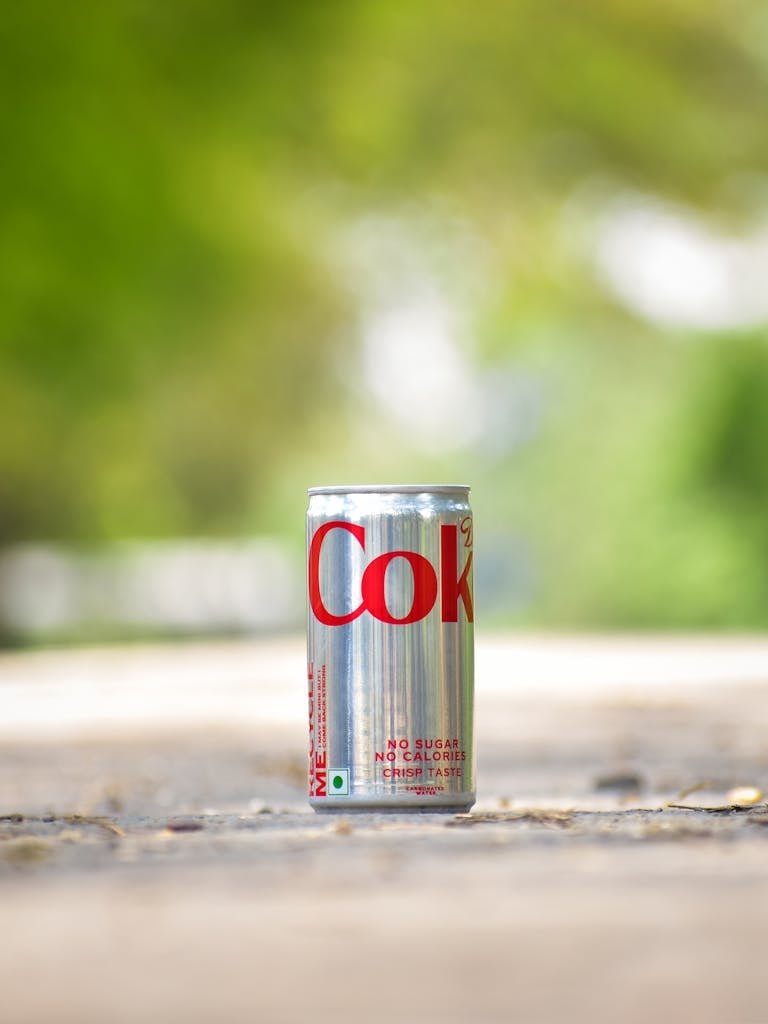
Primary Diet Coke Ingredients: The Basics
Let’s dive into the little secrets that make Diet Coke a beloved choice. Every ingredient has its role, like players in a symphony, creating the drink folks can’t get enough of.
Diet Coke Ingredients: Carbonated Water
Let’s kick things off with carbonated water, the backbone of Diet Coke. This bubbly star is what makes every sip so fizzy and fun. By pumping carbon dioxide into the water, Coke achieves that delightful tingling sensation we all know and love. It’s the fizz that makes you grin with every gulp.
Diet Coke Ingredients: Aspartame
Now for the sweet stuff—Aspartame, Diet Coke’s sugar swap, doing the heavy lifting in the flavor department. It’s a smarty-pants sweetener, fooling our taste buds without packing on the pounds. Holding a major position in the diet soda market, this clever sugar stand-in has its share of debates over health concerns. But as long as we stick to the provided guidelines, experts say it’s A-okay for sipping.
Diet Coke Ingredients: Caramel Color (E150d) Production and Purpose
Next on the lineup is caramel color, our visual impresario. It gives Diet Coke that inviting amber hue. This isn’t your typical kitchen caramel; it’s a bit of a science fair production, with sugar heated just right to produce a consistent color that says, “I’m your classic cola.”
Diet Coke Ingredients: Phosphoric Acid
Phosphoric acid enters the stage, adding its tangy twist. It’s like the sassy sidekick, balancing out the sweetness with a perfectly timed zing. This ingredient is essential for that signature Diet Coke taste that sets it apart. Plus, its preservative powers help keep the soda popping for ages.
Diet Coke Ingredients: Citric Acid
Last but not least, let’s chat citric acid. Think of it as the refreshing breeze that perks up your senses, adding that subtle citrus flair. It’s also a bit of a guardian, keeping your drink fresh and funky-free on the shelf.
So, there you have it. Each piece plays its part in making Diet Coke what it is. If you’re nosey about comparing with other big names like Pepsi, Coca-Cola, or Fanta, that’s a cool way to see how they stack up ingredient-wise. It sure makes me appreciate what’s in my cup every time!
Artificial Sweeteners in Diet Coke
I’ve been digging into what’s really inside Diet Coke, especially the sweet stuff like aspartame, which is the main sugar swap they use. My quest into diet coke ingredients has shown me just how tricky these sweeteners can be.
All About Aspartame: What’s Inside and Is It Safe?
Aspartame ain’t your regular sugar, it’s about 200 times sweeter, which means a little goes a long way. It’s made of two amino acids that your body already knows: phenylalanine and aspartic acid. Tons of studies have poked at aspartame to see if it’s safe, and the big wigs like the FDA and the European Food Safety Authority give it a nod for safe use, as long as you don’t guzzle it beyond suggested limits (Fortune).
| Component | Ratio |
|---|---|
| Aspartame | ~200 times sweeter than sugar |
| Calories per gram | 4 |
| Acceptable daily intake (ADI) | 50 mg/kg body weight (FDA) |
How Aspartame Stacks Up Against Other Sweeteners
Aspartame may steal the limelight, but it’s got competition in the sweetener world, like sucralose and saccharin. Each one brings its own flair—some taste sweeter, others have that aftertaste you can’t shake.
| Sweetener | Sweetness Relative to Sugar | Calories | Primary Uses |
|---|---|---|---|
| Aspartame | 200 times | 0 | Diet sodas, sugar-free goodies |
| Sucralose | 600 times | 0 | Baked treats, cooking magic |
| Saccharin | 300-500 times | 0 | Drinks, candies |
Sweetness Showdown: How Aspartame Measures Up
Aspartame’s sweetness pack a punch, so just a pinch brings that sugary essence to Diet Coke. Your taste buds might tell you there’s a slight twist compared to regular sodas. Based on my taste buds’ wisdom, some folks can sniff out the difference between Diet Coke’s blend and the full sugar version.
The Taste Test: Getting to Know Aftertaste
When I took a taste trip through various sodas, it turns out artificial sweeteners often leave a mark—a distinct aftertaste that hits folks differently. This lingering flavor can make or break it for some when picking between regular and diet sodas. Out of the bunch, aspartame seems to tiptoe more gently in the aftertaste department, which might be why many soda enthusiasts prefer it.
How the Big Guys Around the World See Aspartame
Aspartame’s been under the magnifying glass all over the globe. The WHO tagged it with a “possibly carcinogenic” label based on flimsy evidence, but eating it within the set limits is still considered safe by various groups like the FDA and the Expert Committee at WHO (Forbes). As health-conscious peeps, it’s smart to stay in the loop and figure out what sits well with our personal needs.
Aspartame’s role in Diet Coke highlights the tightrope walk between nailing that sweet craving and keeping it calorie-light in the world of drinks.
Preservatives and Flavor Components
Boy, do I love Diet Coke! Diving into its ingredients felt like peeling back layers of a mysterious onion—who knew such refreshment came from such a concoction? Here’s my take on what jazzes up my go-to fizz.
Breakdown of potassium benzoate’s preservative function
Ever wonder why your Diet Coke doesn’t turn into a science experiment? Thank potassium benzoate for that. This preservation powerhouse keeps mold and bacteria at bay, ensuring every gulp tastes as it should. It’s like the bodyguard that keeps my drink fresh and fighting fit.
Analysis of citric acid’s dual role in preservation and taste
Citric acid in Diet Coke isn’t just for zip and zing—it’s like a double agent. It preserves the drink’s integrity while cranking up the tangy goodness. Sourced from citrus, this acid hero maintains the fizzy tartness while lockdown is spoilage. No scary bacteria here!
Examination of natural flavors used in the formula
Ever tasted something kinda secretive? That’s the natural flavors at work in Diet Coke. They’re like a jazz band where each flavor note hits just right. Though the specific ingredients stay under wraps, these plant-based wonders amplify the soda’s deliciousness, brewing up a medley of delightful notes.
Discussion of caffeine content and its purpose
Caffeine in Diet Coke—the pick-me-up master. We’re talking about 46 mg per can, just enough to nudge me awake on a sluggish day. Besides that gentle kick, caffeine mingles with other flavors to give Diet Coke its unmistakable profile—refreshment and alertness in every sip!
| Diet Coke Components | Purposeful Punch |
|---|---|
| Potassium Benzoate | Taste guardian, preservative |
| Citric Acid | Tang intensifier, spoilage blocker |
| Natural Flavors | Taste enhancer |
| Caffeine | Pep provider, flavor booster |
Investigation of how flavors interact to create the signature taste
Crack open a Diet Coke and you unleash a symphony of flavors. Aspartame hits the sweet note, citric acid throws in a tart twist, while those secret natural flavors harmonize in the background. Each sip is a well-orchestrated dance of sweetness meeting acidity—a tribute to my everyday joy.
Curious how your other soda favorites stack up? Here’s where to check their ingredient line-ups: Pepsi, Coca-Cola, and Fanta. Spoiler: there’s a whole world of bubbly adventures waiting.
Diet Coke Variations Around the World
Comparison of Ingredient Lists Across Different Countries
Traveling through the realm of Diet Coke, I stumbled upon curious differences in ingredients depending on where you’re buying your can. It’s not just a fizzy bubble affair—different countries mix it up based on what folks like there and what the rules say. Here’s a peek at what goes into a can in the U.S. versus around the globe.
| Ingredient | United States | United Kingdom | Canada | Australia |
|---|---|---|---|---|
| Carbonated Water | Yes | Yes | Yes | Yes |
| Aspartame | Yes | Yes | Yes | Yes |
| Caramel Color (E150d) | Yes | Yes | Yes | Yes |
| Phosphoric Acid | Yes | No | Yes | No |
| Citric Acid | Yes | Yes | Yes | Yes |
| Preservatives | Potassium Benzoate | Potassium Benzoate | No | No |
| Caffeine | Caffeinated | Caffeinated | Caffeinated | Caffeinated and Caffeine-Free |
Analysis of European vs. American Formulations
Here’s the fun part: while Americans are sipping on phosphoric acid-infused Diet Coke, many folks across Europe skip this acid party altogether. It’s like a flavor negotiation—some Europeans might just prefer a different taste dance. Also, the swap in sweeteners varies, and you’ll find both buzzed and buzz-free versions out there, catering to late-night owls and caffeine avoiders alike (Coca-Cola).
Exploration of Regional Flavor Preferences and Adaptations
In some spots, local taste buds have the final say, nudging the recipe to tweak the sweetness or amp up those zesty citrus vibes. Such tinkering makes sure Diet Coke stays in everyone’s good books worldwide.
Overview of Diet Coke Flavored Variants
Diet Coke doesn’t just stop at the classic fizz; it jazzes things up with:
- Diet Coke Raspberry
- Diet Coke Blood Orange
- Diet Coke Strawberry Guava
These snazzy variants let fans sip on something familiar yet thrilling, proving why this soda keeps standing out.
Discussion of Country-Specific Regulations Affecting Ingredients
Country rules aren’t just red tape—they’re gatekeepers ensuring safety and satisfaction. In the EU, the nit-picky regulation on sweeteners and colors means adjusting the mix to match health standards put in place by big names like the European Food Safety Authority (EFSA) (Fortune).
Seeing these changes proves how flexible Diet Coke is, shape-shifting as needed by following consumer cravings and regulation paths. Along my fizzy journey, I’ve figured there’s more than meets the taste. For extra fun in the soda world, check out what goes into your other favorites: Pepsi, Coca-Cola, Fanta, Sunkist, and 7-Up.
Health and Safety Considerations
When I started digging into Diet Coke ingredients, I got to thinking about the health pros and cons of sipping on this famous fizzy drink. There’s a bunch to ponder, like its zero-calorie pitch, how safe those fake sugars really are, its dental downsides, caffeine effects, and what the rule-makers say about the safety of what’s inside.
Analysis of Zero-Calorie Claim and Metabolic Effects
Diet Coke is touted as having zero calories, but research whispers that sugar swaps like aspartame might shake up the body’s own systems. This shake-up could push the body to stash away fat rather than torch it, stirring up chatter about higher risks for diabetes and heart trouble (MD Anderson). Grasping how these sweeteners mess with metabolism is key for die-hard Diet Coke fans.
Discussion of Artificial Sweetener Safety Research
Are those lab-made sweeteners safe? It’s a toss-up. Back in 2013, the European Food Safety Authority gave a big thumbs-up to low-calorie sweeteners, saying they’re safe and might help keep your weight in check (Fortune). But some research pokes at possible ties between artificial sweeteners and health woes, like a bump in cancer risks (MD Anderson).
Investigation of Dental Health Impacts
Sure, Diet Coke skips the sugar, but it’s not above packing some acid that’ll wear away your tooth armor over time. Swigging acidic drinks often can bring dental dramas, like cavities and cranky teeth. So while Diet Coke might not rot your teeth like sugary sodas, its toll on your oral health is worth a look.
Examination of Caffeine Content and Effects
Diet Coke’s got caffeine, and how it hits you depends on your caffeine-coping chops. While caffeine can kick up your energy and perkiness, too much might edge you into sleepless nights, jitters, or a racing heart. Keeping tabs on Diet Coke’s caffeine levels is a smart move for anyone mindful of their caffeine agenda.
| Drink | Caffeine Content (per 12 oz) |
|---|---|
| Diet Coke | 46 mg |
| Regular Coke | 34 mg |
| Pepsi | 38 mg |
| Diet Pepsi | 35 mg |
Overview of FDA Stance on Ingredient Safety
The FDA’s on record saying aspartame is safe for the average joe, excluding folks with phenylketonuria (PKU), a rare genetic hiccup. This draws a line under the need to know personal health quirks before downing products with this sweetener (Fortune). Staying clued-up on ingredient safety and news from watchers over our food is crucial.
All this talk about health and safety means really getting to grips with what’s in Diet Coke and how it might play out on our health. By staying informed, we can make smarter choices about soda guzzling and the health stuff that comes with it. For tidbits on what’s inside other fizzy favorites, have a look at Pepsi ingredients, Coca Cola ingredients, Fanta ingredients, Sunkist ingredients, and 7-Up ingredients.
Conclusion
So, after pokin’ around what makes Diet Coke tick, I’ve gotten a real good grip on what we’re sippin’ on. From the bubbles that tickle your nose to the sweet stuff like aspartame, every little thing in there plays its part in that signature zing of Diet Coke.
The scoop on artificial sweeteners was a real eye-opener, I tell ya. Aspartame might make it sweet without the sugar crash, but it does make you stop and think about the health bits involved. Dug up some facts from reputable places like the Mayo Clinic and the Journal of the American Geriatrics Society. They give ya the lowdown on how diet sodas could mess with your metabolism or maybe lead to bigger woes like strokes and packing on the pounds.
Interesting, too, how Diet Coke flavors shift just by crossing a border. It’s like a taste map of the world! Local flavors and rules shake things up, showing how what we drink and eat here ain’t the same halfway across the globe.
I can’t open a can of Diet Coke because I’m becoming aware of what’s going into my body. If you’re curious how Diet Coke stacks up against its soda buddies, take a peek at the ingredient lists from Pepsi, Coca-Cola, Fanta, Sunkist, and 7-Up. Each has its own charm and concoction, adding more fizz to the story of sodas.
Want to learn more about your favorite diet sodas? Join our community for regular updates on beverage ingredients, health research, and the latest industry insights!



